Battle of Sewell's Point
Introduction
Text-to-speech Audio
Images
Representation of the Battle of Sewell's Point
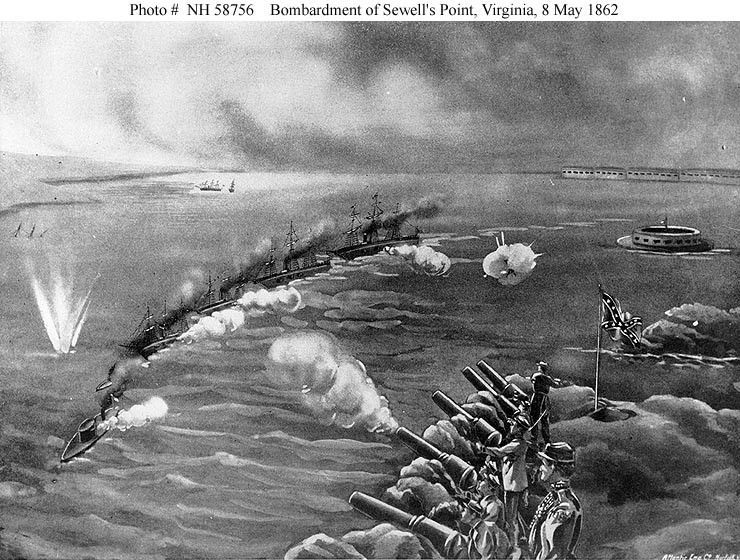
A 32-pounder cannon similar to those employed by Confederates at Sewell's Point.
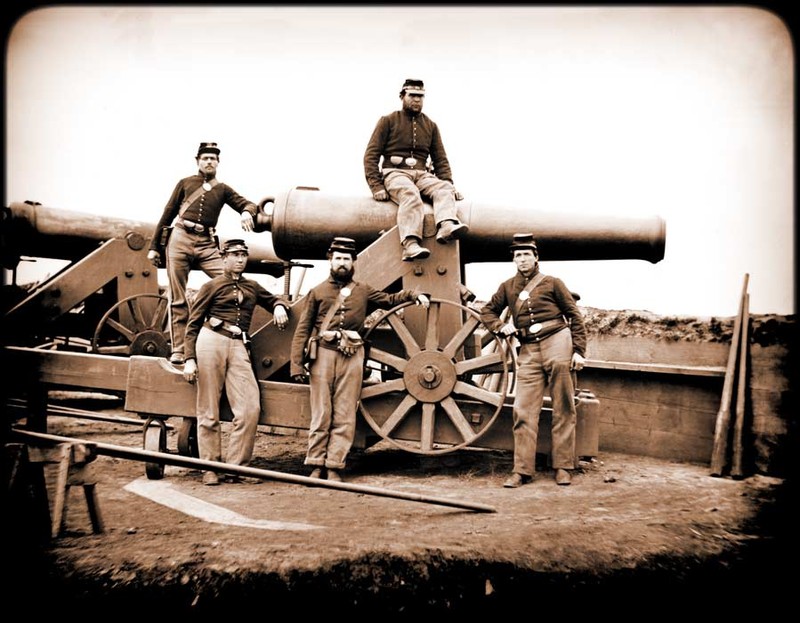
USS Monticello as she appeared just before the war. Built in 1859, she was purchased by the Navy in 1861 and converted for military use.
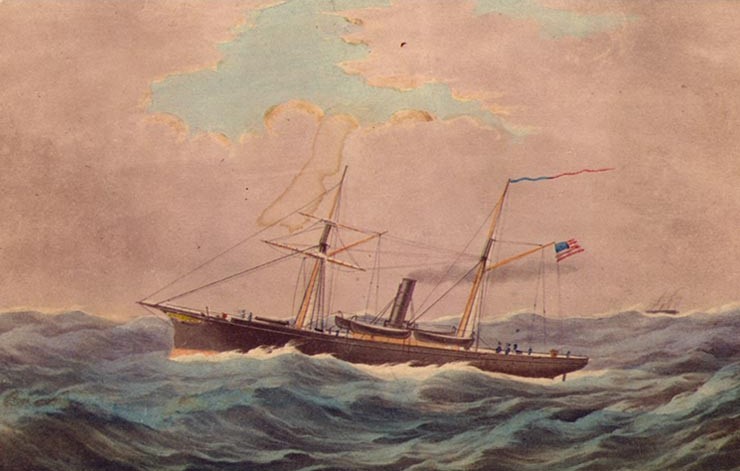
A Harper's Weekly engraving showing several civilian steamships acquired by the US Navy in 1861 and converted to join the blockading squadrons. Monticello is third from right.
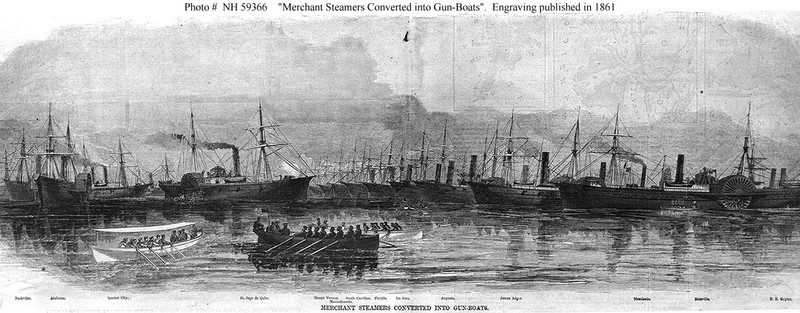
Deck of the USS Thomas Freeborn in 1861. The ship was originally conditioned for the planned relief of Fort Sumter, which was aborted when the fort was bombarded. She also participated in the hunt for John Wilkes Booth, Lincoln's assassin, in 1865.
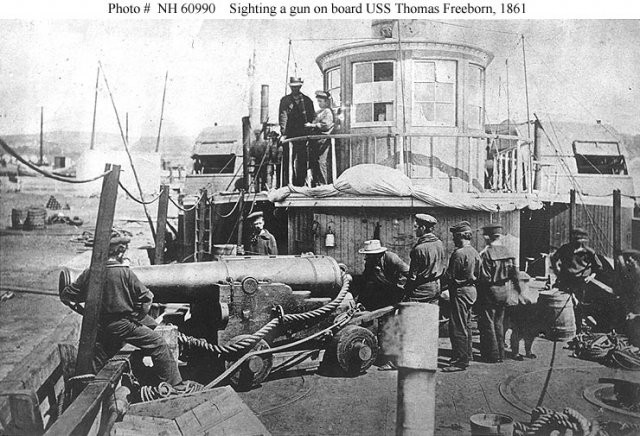
The USS Thomas Freeborn participating in a battle against Confederate batteries at Acuia Creek the month after the Battle of Sewell's Point. The Freeborn is the small vessel in the center.
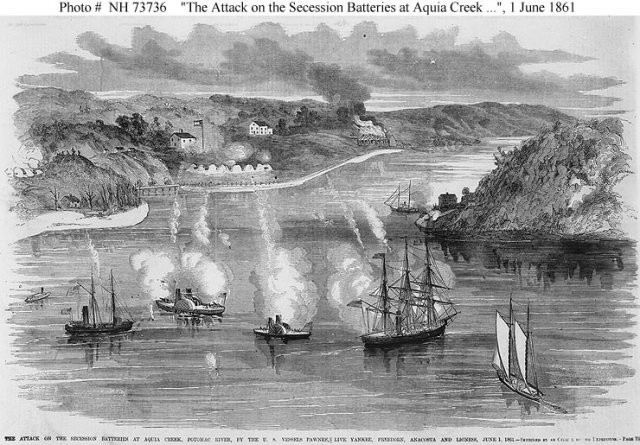
Captain Peyton Holt Colquitt, commanding the Confederate battery at Sewell's Point. He was later killed at the Battle of Chickamauga in 1863.
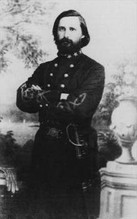
Commander James Ward, captain of the USS Thomas Freeborn. As a young lieutenant, he was one of the five founders of the Annapolis Naval Academy and even wrote a textbook on naval tactics. He was the first US Navy officer killed during the Civil War.
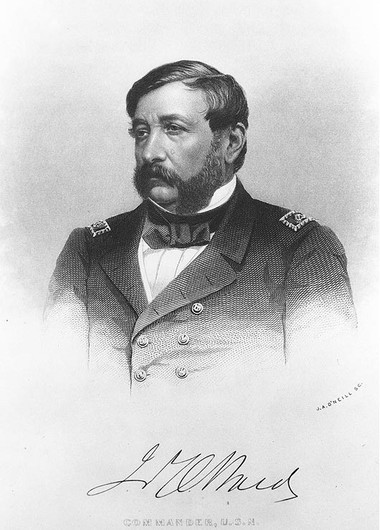
Backstory and Context
Text-to-speech Audio
THE BATTLE
On the night of April 20, 1861--just a few days after Confederate forces fired on Fort Sumter in Charleston, South Carolina in the first act of aggression that sparked the Civil War--the Commander of the Gosport Navy Yard in Norfolk, Virginia set fire to the facility and evacuated his personnel.
Nine ships of the U.S. Navy were burned, but most of the facility survived serious damage. Over a thousand cannon fell into Confederate hands, along with other materials of war. But President Lincoln quickly reinforced the nearby Federal stronghold at Fort Monroe, which remained in Union hands for the duration of the war. This gave a base of operations to the Union gunboats of the blockading squadron, tasked with preventing Confederate shipping from moving freely in the area.
These gunboats soon noticed Confederate activity at Sewell's Point near Hampton Roads, where the blockading squadron often patrolled. Brigadier General Walter Gwynn, Confederate commander in the region, had ordered a coastal battery to be constructed at Sewell's Point, opposite the Union-held Fort Monroe.
One of these gunboats, the USS Monticello, commanded by Captain Henry Eagle, approached and discerned the purpose of the earthworks he saw being constructed there. The Monticello opened fire on the battery, which held two 32-pound cannon and two rifled guns and their crews. Eagle's vessel was joined shortly by the USS Thomas Freeborn, an armed tug.
The Confederates soon recovered from their surprise and returned fire. An inconclusive artillery duel followed. Captain Peyton Colquitt, commanding the Confederate battery, lacked a Confederate or Virginia flag and instead hoisted the flag of his home state of Georgia in a gesture of defiance. Darkness soon forced the various combatants to abandon hostilities.
The two Union vessels returned the next day to renew the fight. Colquitt's men had worked through the night to strengthen the breastworks, so Monticello and Thomas Freeborn were unable to inflict any further damage. Several well-aimed shots eventually took a toll on Monticello, and Captain Eagle was forced to retire from the fight before further damage was suffered. Records are scarce, but a history of Norfolk County written in 1902 claims that the only casualty was a Confederate private struck by shell fragments.
LATER IN THE WAR
Though the Battle of Sewell's Point was over, her role in the war was not yet finished. The Confederate battery there continued to trade shots with Union gunboats over the next year, and was even shelled by direct order of President Lincoln by an experimental cannon Union troops installed at nearby Fort Wool.
Finally, when Confederate forces set fire to Norfolk Navy Yard and retreated in June 1862, the battery at Sewell's Point was untenable. It was abandoned, and when President Lincoln (who was in personal military command of the area at the time) discovered on June 9, 1862 that it was no longer manned, he ordered troops to advance on Norfolk.
TODAY
The site of the battery at Sewell's Point is currently inaccessible, as the grounds are part of the present-day Norfolk Navy base.
Sources
2. http://worldhistoryproject.org/1861/5/18/battle-of-sewells-point-union-gunboats-duel-with-Confederat...
3. Edling, Richard. Sewell's Point: Hampton Roads, Virgina. Civil War Album. Accessed September 06, 2017. http://www.civilwaralbum.com/misc7/sewells_point1.htm.
4. Battle of Sewell's Point. Civil War Wiki. May 15, 2013. Accessed September 06, 2017. http://civilwarwiki.net/wiki/Battle_of_Sewell%27s_Point.
5. The Battle of Sewell's Point. My Civil War. Accessed September 06, 2017. https://www.mycivilwar.com/battles/610528.html.
6. Thomas Freeborn (1861-1865). CivilWar.com. Accessed September 06, 2017. http://www.civilwar.com/weapons/union-ships/146853-thomas-freeborn-1861-1865-.html.
